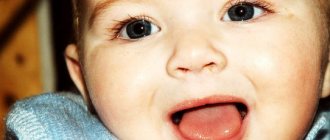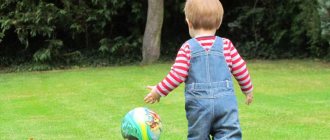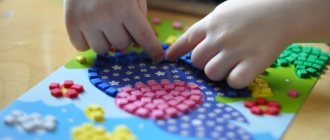Features of speech development at 4 years of age
Children's environment
The level of speech development at this age depends as much as possible on the environment of your son or daughter. What is meant by this? Firstly, family upbringing.
Parents should not brush their children off when they want to talk. Know how to listen to them at any time. Moreover, be the initiator of the conversation yourself. Make sure your speech is correct. You are still the main example for your child.
Secondly, a highly qualified teacher and a good kindergarten also have an impact. At this age, the child spends 50/50 time at home and in kindergarten. Therefore, it is very important to find a suitable institution and a teacher who knows his business. However, one cannot blame all the work aimed at the development of a child on grandmothers, nannies and educators.
Thirdly, do not forget about the correct fiction and its availability in general. If you have a choice between buying a new toy or a book, then don’t hesitate to buy the book.
Read with your child as much as possible. Create assignments based on books. For example, change the ending or compose a story based on a picture, etc.
Originality of speech
All of the above can be attributed to the human factor. Now let's talk about more specific features. The main difference between the vocabulary of this age is that more adjectives appear in speech.
This is due to the fact that it becomes important for children to clarify the qualities and characteristics of an object. Also in speech the number of prepositions and pronouns increases.
As for the grammatical structure, a distinctive feature of children's speech is the frequent use of more complex sentences. Errors are becoming less common, but they still occur: incorrect sentence structure, incorrect gender and number agreement, and erroneous verb endings.
In terms of sound pronunciation, articulation is becoming better, more trained and more confident. At this age, speech therapists in kindergarten begin to work with children. So, if any problem occurs, they will help you. Just be careful with your child in order to notice any violations in time.
A child's speech at 4 years old is normal.
What should a child say at 4 years old? Ideally, a 4-year-old child should have a vocabulary of up to 3,000 words. The richness of the language is reflected in the way your child constructs sentences. According to the requirements set by specialists (speech therapists, pediatricians, neurologists), the baby should already speak in complex sentences:
• complex compositions (“The sun hid and it began to rain.”); • complex subordinates (“We fought because Yegor hit me.”)
Your baby is distinguished by reasonableness and knows how to explain his actions. Some children at the age of 4 already know all the letters and learn to read, and some begin to learn foreign languages. However, if a child does not know letters and cannot yet read, then this is not a deviation and a reason to urgently run to the doctors. Practice and little by little your baby will learn everything!
Vivid emotional speech, the ability and desire to tell what happened during the day, to share what they saw and heard - this is what awaits parents in the 5th year of the baby’s life. He can already retell a fairy tale or recite simple poems by heart - with expression, conveying the intonation, tempo of the text and imitating different tones of voice. Moreover, the content of the tale becomes more complicated. This is no longer “Ryaba Hen”, but “Mashenka and the Bear”, “Three Bears”, etc. Fairy tales should already be discussed in detail with the child: plot, characters, emotions, etc. Perfect for reading together at this age, for example, works by Chukovsky. You can look at the examples of fairy tales “Confusion” or “Telephone” for indicative questions that you can ask your child while reading. However, it is worth noting that if parents do not read fairy tales to their child at all, then the child will not be able to retell them. And again, if the work is read monotonously, not in person, then there is no need to demand this from the child. Where can he get examples from?
Norms of speech development for 4-year-old children
- The child uses words exactly according to their meaning.
- His vocabulary includes all parts of speech: nouns, verbs, adjectives, adverbs, pronouns and numerals.
- Able to describe a picture in 7-8 sentences.
- The baby is able to control the volume of speech.
- The speech has an expressive intonation.
- Correct speech rate.
- The child is able to learn simple rhymes and songs.
- The pronunciation of all sounds is correct, but problems may arise with l, r, sh, sch, ts.
At the age of 4-5 years
, when the child already has a good command of speech and can talk with an adult on abstract topics, non-situational-cognitive communication becomes possible. The child acquires a sufficient vocabulary and begins to construct phrases grammatically correctly and pronounce sounds normally.
The active vocabulary that a child has at the age of 4 gives him the opportunity to freely communicate with others. But he often experiences difficulties due to the insufficiency and poverty of the vocabulary when he needs to convey an event in which he himself was a participant. Here the baby often makes inaccuracies.
In the process of mastering new words, the baby not only remembers them, he begins to comprehend their sound side, tries to establish a closer connection between the object and the word denoting it. At the same time, the child strives to understand in his own way the names of certain objects and actions, that is, he develops a motivated attitude towards vocabulary. He often begins to use words that are not in his native language (they dig with a shovel, which means it is a “dig” and not a shovel).
Simultaneously with the enrichment of the vocabulary, the child more intensively masters the grammatical structure of the language. He increasingly answers questions from adults with detailed phrases consisting of four or more words. His speech is dominated by simple common members (“Tanya and Sveta are sitting here”), nouns and plural verbs (“Cups are on the table”). At this age, children master the comparative degree of adjectives and adverbs, and short participles appear in speech.
Increased interest in the sound side of a word helps the child change words by analogy with others. However, such changes are not always successful. Children of this age still make grammatical errors: they incorrectly agree words, especially neuter nouns with adjectives, and incorrectly use case endings (“Mom washes the windows”). When forming the genitive case of plural nouns, the influence of the ending -ov, -ev on other declensions (dom - houses, handle - “handles”) is noted. There are also frequent errors in the use of indeclinable nouns (“And a button on my coat came off”), and incorrect changes in person even of frequently used verbs.
At this age, the child is not yet able to independently talk logically, coherently and clearly for others about the events he witnessed; he cannot intelligently retell the content of a fairy tale or story read to him. His speech is still situational.
The child’s utterances consist of simple common sentences, often only distantly related in content. It is not always possible to understand their content without additional questions. There is still no development in the utterance that is characteristic of monologue speech.
The child also cannot independently reveal or describe the content of the plot picture. He only names objects, characters or lists the actions they perform (jumping, washing themselves). Having a good memory, the baby is able to remember and reproduce short poems and nursery rhymes. And having repeatedly listened to the same fairy tale, he can convey its content almost word for word, often without even understanding the meaning of the words.
From the pronunciation side, the appearance of many sounds is noted. Most children correctly pronounce such difficult sounds as “s”, “e”, “x”. They bring whistling sounds closer to normal and pronounce whistling sounds more clearly. Master the sound “ts”. Some children develop sounds of late ontogenesis (sounds “sh”, “zh”, “ch”, “sch”, “l”, “r”). But, as a rule, most babies do not yet pronounce hissing sounds, replacing them with corresponding hard whistling sounds: the sound “sh” with the sound “s” (“suba” instead of shub), etc.
Four year old child
In four-year-old children, individual differences in the formation of the pronunciation aspect of speech are especially pronounced: in some children, speech is clear, with the correct pronunciation of almost all sounds, while in others it may not yet be clear enough, with incorrect pronunciation of a large number of sounds, with softening of hard consonants, etc. etc. Parents and educators should pay special attention to such children, identify the reasons for the lag and take measures to eliminate the shortcomings.
Adults should never imitate children's speech. You need to talk to your child using simple, correct speech that is understandable to him, with a clear, correct pronunciation of each word and at a normal pace.
So, in the fourth year of life, children experience a noticeable improvement in pronunciation, speech becomes more distinct. Children know well and correctly name objects in their immediate environment: toys, dishes, clothes, furniture. Not only nouns and verbs are beginning to be used more widely, but also other parts of speech: adjectives, adverbs, prepositions. Simple common sentences predominate in children's speech.
Four-year-old children cannot independently isolate sounds in words, but they easily notice inaccuracies in the sound of words in the speech of their peers. The speech is accurate in vocabulary and perfect in grammatical terms, but not entirely pure and correct in pronunciation. A child can, with a little help from adults, convey the content of a well-known fairy tale or recite a short poem by heart. The initiative in communication increasingly comes from the child.
By the age of 5-6 years, a child’s vocabulary is approximately 3000 words.
The child already consciously approaches some linguistic phenomena. He thinks about his speech, he himself creates a number of new and original words by analogy (For example, he says “naked” (ate pasta), “didn’t sleep” (didn’t get enough sleep), etc.). This indicates that the child is trying to understand some principles of the formation of new words, but due to his lack of sufficient speech experience, he is unsuccessful.
In the fifth year
Throughout life, the child shows significant progress in mental and speech development. The baby begins to identify and name the most significant features and qualities of objects, establish the simplest connections and accurately reflect them in speech. His speech becomes more varied, more precise and richer in content. The stability of attention to the speech of others increases, he is able to listen to the answers of adults to the end.
At this age, children begin to master monologue speech. In their speech, sentences with homogeneous circumstances appear for the first time. They learn and correctly agree adjectives with nouns in indirect cases. However, many still cannot independently, without the help of adults, coherently, consistently and accurately retell the text of a fairy tale or story they have read.
In the fifth year of life, a child is able to recognize by ear this or that sound in a word, and select words for a given sound. All this is possible only if in previous age groups the teacher developed phonemic awareness in children.
A child’s sufficiently developed speech hearing gives him the opportunity to distinguish between increases and decreases in voice volume in the speech of adults. And also notice the acceleration and deceleration of the rate of speech, grasp various means of expression. By imitating adults, children can themselves quite accurately reproduce various intonations. For example, raise and lower the tone of voice, highlight individual words and syntagms in phrases, pause correctly, express an emotional-volitional attitude to what is being said.
The child's exhalation lengthens. He is able to pronounce vowel sounds within 3-7 s, free exhalation when blowing on the plume is somewhat shorter (from 2 to 5 s).
By the end of the fifth year, many children have mastered the pronunciation of all the sounds of their native language, but some still incorrectly pronounce sibilants and the sound “r”.
So, by the age of five
Children show a sharp improvement in the pronunciation aspect of speech, and most of them are completing the process of mastering sounds. Speech in general becomes cleaner and more distinct. The speech activity of children increases. Children begin to master monologue speech, but structurally it is not always perfect and most often has a situational nature.
In the sixth year
Throughout life, the improvement of all aspects of the child’s speech continues. The pronunciation, more precise statements, more detailed phrases are becoming clearer. The child not only identifies significant features in objects and phenomena. He also begins to establish cause-and-effect relationships between them, temporal and other relationships.
Having sufficiently developed active speech, the preschooler tries to tell and answer questions so that the listeners around him understand what he wants to say. Simultaneously with the development of a self-critical attitude towards his own statement, the child also develops a more critical attitude towards the speech of his peers. When describing objects and phenomena, he makes an attempt to convey his emotional attitude.
In older preschool age, an important task is to prepare the child for school. At this age, it is necessary to teach the preschooler to coherently and consistently convey what he sees, to correctly pronounce words and phrases. A preschooler, even one who speaks well, often, for example, does not realize that a word consists of individual sounds. But it is enough to attract the child’s attention to the sound side of speech, and it becomes the source of his active observations.
Not all children experience the process of language acquisition equally successfully. There are often cases when, during the formation of oral, and later written speech, various deviations arise that disrupt the normal course of its development. Such deviations must be treated very carefully and eliminated in a timely manner, otherwise they can delay the child’s mental development and traumatize his psyche.
Tags: speech development speech of a child 4 years 5 years 6 years vocabulary
Speech delay
There are two main causes of disorders: biological and social. The first is associated with developmental disorders of the child while still in the womb (asphyxia, prematurity, trauma during childbirth, etc.).
In addition, complex and serious vaccinations may affect the delay. Or, for example, hearing loss.
The second is that social reasons depend on the child’s environment. This may be a lack of growth stimulus, untimely development, stressful situations, lack of communication, etc.
Social causes are usually easier to deal with than biological ones. But in any case, it is important to notice violations in time and contact a specialist. Let's list some examples of speech delay.
- incorrect pronunciation of complex words;
- cannot form a sentence of more than 2-3 words;
- vocabulary is poor (mainly consists of words found in everyday life);
- articulation is impaired;
- does not notice mistakes in himself or others.
Developing vocabulary in children
From an early age, parents need to make efforts to ensure that the child’s vocabulary is constantly replenished with new names and concepts. What can be done for this?
- Read books. With the help of stories and fairy tales, we expand the child’s horizons, teach him to perceive new information, fantasize and dream. For example, a child will be able to see a live toucan or giraffe only in a zoo, but with the help of a book he will get acquainted with new animals, birds, and learn a lot of interesting things about them. For small children, buy books with bright, colorful illustrations. You can purchase publications with tactile pictures that your baby can touch with his fingers. Talk about everything the child sees in the picture: “Look what a beautiful farm! Where is the cockerel? And the chicken? Show me the pig, please."
- We talk more. From birth, pronounce your actions: “Now I’ll change you, and we’ll go for a walk,” “Mom will cook delicious porridge, and we’ll have breakfast.” While walking, tell your baby about trees, flowers, buildings. At home, name all the objects you pick up: toys, clothes, food, etc. Constantly talk to your child, use synonyms, and monitor the emotional coloring of your speech. Show the entire emotional palette of words so that the baby understands how mom feels when she explains or says something.
Diagnosis of disorders
You can diagnose speech development with your child at home. There are several tasks for this, based on the results of which you can draw certain conclusions.
- Ask your child to name words from pictures: toys, furniture, animals, seasons.
- Also, using these pictures, ask about the qualities of these items.
- Invite the children to carry out some of your instructions: bring a toy, draw a tree, etc.
- For a grammatical study of speech, ask your child to: change the number of a noun, count objects and pronounce affectionate words using a diminutive suffix.
- In order to determine the level of development of phrasal speech, ask your child to complete your sentence. To make this task easier, you can use pictures with a suitable plot.
Logics
At 4 years old, a child is able to concentrate attention on an event or action a little longer than at 3 years old, and accordingly, build the following logical relationships:
- be able to count to 10 and navigate these numbers (5 is less than 8, 8 is more than 7);
- rewrite letters or numbers based on the picture;
- compare objects by shape and size;
- sketch simple geometric shapes;
- combine and separate objects by properties;
- separate the fictional from the real;
- navigate in space and remember familiar routes;
- remember your home address;
These skills are the foundation for the further development of logic and mental abilities.










